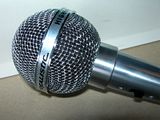samth3mancgp
New member
I have several microphones that are cheap and have permanently attached cables that are either 1/4" unbalanced, or 1/8" unbalanced mono. Some are old Realistik Highball 2 omni dynamic mics, and the others are old Sony F-98 cardioid dynamic mics. They are cheap and are definitely not the typical mics that people talk about around here but they just sound good in front of a guitar amp and several other applications for me.
What I want to do is get rid of that terrible permanently attached cord and put an XLR jack on them. Is it absolutely necessary that I put other electronics in the mic to make it a balanced output before the jack? I'm not really sure where to start but I'm tired of using stereo headphone extension cables as a means of getting the signal from these mics to my preamps. It's just not professional and is extra work than just using an XLR.
any help would be appreciated. thanks.
What I want to do is get rid of that terrible permanently attached cord and put an XLR jack on them. Is it absolutely necessary that I put other electronics in the mic to make it a balanced output before the jack? I'm not really sure where to start but I'm tired of using stereo headphone extension cables as a means of getting the signal from these mics to my preamps. It's just not professional and is extra work than just using an XLR.
any help would be appreciated. thanks.


 So I'm not really looking to save up for a better mic because I already have some better mics, I have a few Shure SM57s, MXLs, Rode NT1, a Shure Drum mic kit and an AKG C414 just to name a few of the better/more common ones.
So I'm not really looking to save up for a better mic because I already have some better mics, I have a few Shure SM57s, MXLs, Rode NT1, a Shure Drum mic kit and an AKG C414 just to name a few of the better/more common ones. 



 Has anybody done this before? do all 3 pins on the XLR need to be hooked up to a cable? i have tried several combinations now with still no good signal coming through
Has anybody done this before? do all 3 pins on the XLR need to be hooked up to a cable? i have tried several combinations now with still no good signal coming through